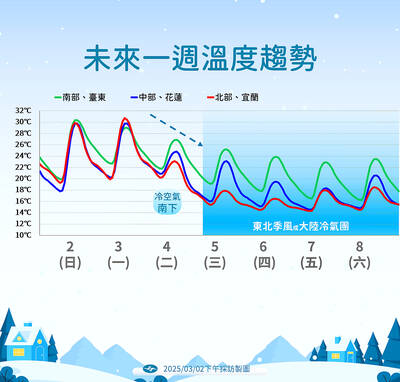A Chinese cosmetics company is using skin harvested from the corpses of executed convicts to develop beauty products for sale in Europe, an investigation by the Guardian has discovered.
Agents for the firm have told would-be customers it is developing collagen for lip and wrinkle treatments from skin taken from prisoners after they have been shot. The agents say some of the company's products have been exported to the UK, and that the use of skin from condemned convicts is "traditional" and nothing to "make such a big fuss about."
With European regulations to control cosmetic treatments such as collagen not expected for several years, doctors and politicians say the discovery highlights the dangers faced by the increasing number of people seeking to improve their looks. Apart from the ethical concerns, there is also the potential risk of infection.
The House of Commons' Select Health Committee is to examine the regulatory system and may launch an investigation and question ministers about the need for immediate new controls.
"I am sure that the committee will want to look at this," said Kevin Barron, its Labour chairman. "This is something everyone in society will be very concerned about."
Plastic surgeons are also concerned about the delay in introducing regulations to control the cosmetic-treatments industry.
It is unclear whether any of the "aesthetic fillers" such as collagen available in the UK or on the Internet are supplied by the company, which cannot be identified for legal reasons. It is also unclear whether collagen made from prisoners' skin is in the research stage or is in production.
However, the Guardian has learned that the company has exported collagen products to the UK in the past.
An agent told customers it had also exported to the US and European countries, and that it was trying to develop fillers using tissue from aborted fetuses.
When formally approached by the Guardian, the agent denied the company was using skin harvested from executed prisoners. However, he had already admitted it was doing precisely this during a number of conversations with a researcher posing as a Hong Kong businessman.
"A lot of the research is still carried out in the traditional manner using skin from the executed prisoner and aborted fetus, " the agent told the researcher.
This material, he said, was being bought from "biotech" companies based in Heilongjiang Province and was being developed elsewhere in China.
He suggested that the use of skin and other tissues harvested from executed prisoners was not uncommon.
"In China it is considered very normal and I was very shocked that Western countries can make such a big fuss about this," he said.
Speaking from his office in northern China, he added: "The government has put some pressure on all the medical facilities to keep this type of work in low profile."
The agent said his company exported to the west via Hong Kong.
"We are still in the early days of selling these products, and clients from abroad are quite surprised that China can manufacture the same human collagen for less than 5 percent of what it costs in the West," he said.
Skin from prisoners used to be even less expensive, he said.
"Nowadays there is a certain fee that has to be paid to the court," he said.
The agent's admission comes after an inquiry into the cosmetic surgery industry in Britain, commissioned by the Department of Health, pointed to the need for new regulations controlling collagen treatments and the use of cadavers for cosmetic treatments.
The Department of Health has agreed to the inquiry's recommendations, but is waiting for the European commission to draw up proposals for laws governing cosmetic products. It could be several years before this legislation takes force.
Meanwhile, cosmetic treatments, including those with with aesthetic fillers, are growing rapidly in popularity. Lip enhancement treatments are one of the most popular.
Some fillers are made from cattle or pig tissue, and others from humans. Health officials believe that there may be a risk of transmission of blood-borne viruses and even vCJD from collagen containing human tissue.
While new regulations are to be drawn up, the UK's health department is currently powerless to regulate most human-tissue fillers intended for injection or implant, as they occupy a legal grey area. Most products are not governed by regulations controlling medical products, as they are not classified as medicines.
They also escape cosmetics regulations, which only apply to substances used on the surface of the skin and not those injected beneath it. The UK Healthcare Commission is planning new regulations for cosmetic surgery clinics next year, but these will not control the substances used by plastic surgeons.
A number of plastic surgeons have said that they have been hearing rumors about the use of tissue harvested from executed prisoners for several years.
Peter Butler, a consultant plastic surgeon and UK government adviser, said there had been rumors that Chinese surgeons had performed hand transplants using hands from executed prisoners. One transplant center was believed to be adjacent to an execution ground.
"I can see the utility of it, as they have access and no ethical objection," he said. "The main concern would be infective risk."
Andrew Lee of the University of Pittsburgh School of Medicine, who has visited China to examine transplant techniques, said he had heard similar rumors.
In China, authorities deny that prisoners' body parts are harvested without their consent. However, there is some evidence to suggest it may be happening.
In June 2001, Wang Guoqi, a Chinese former military physician, told US congressmen he had worked at execution grounds helping surgeons to harvest the organs of more than 100 executed prisoners, without prior consent. The surgeons used converted vans parked near the execution grounds to begin dissecting the bodies, he told the House International Relations Committee's human-rights panel.
Skin was said to be highly valued for the treatment of burn victims, and Wang said that in 1995 he skinned a shot convict's body while the man's heart was still beating.
Wang, who was seeking asylum in the US, also alleged that corneas and other body tissue were removed for transplant, and said his hospital, the Tianjin paramilitary police general brigade hospital, sold body parts for profit.
Human-rights activists in China have repeatedly claimed that organs have been harvested from the corpses of executed prisoners and sold to surgeons offering transplants to fee-paying foreigners.
Wang's allegations infuriated the Chinese authorities, and in a rare move officials publicly denounced him as a liar. The government said organs were transplanted from executed prisoners only if they and their family gave consent.
Although the exact number of people facing the death penalty in China is an official secret, Amnesty International believes around 3,400 were executed last year, with a further 6,000 on death row.

SECURITY: The purpose for giving Hong Kong and Macau residents more lenient paths to permanent residency no longer applies due to China’s policies, a source said The government is considering removing an optional path to citizenship for residents from Hong Kong and Macau, and lengthening the terms for permanent residence eligibility, a source said yesterday. In a bid to prevent the Chinese Communist Party (CCP) from infiltrating Taiwan through immigration from Hong Kong and Macau, the government could amend immigration laws for residents of the territories who currently receive preferential treatment, an official familiar with the matter speaking on condition of anonymity said. The move was part of “national security-related legislative reform,” they added. Under the amendments, arrivals from the Chinese territories would have to reside in Taiwan for

CRITICAL MOVE: TSMC’s plan to invest another US$100 billion in US chipmaking would boost Taiwan’s competitive edge in the global market, the premier said The government would ensure that the most advanced chipmaking technology stays in Taiwan while assisting Taiwan Semiconductor Manufacturing Co (TSMC, 台積電) in investing overseas, the Presidential Office said yesterday. The statement follows a joint announcement by the world’s largest contract chipmaker and US President Donald Trump on Monday that TSMC would invest an additional US$100 billion over the next four years to expand its semiconductor manufacturing operations in the US, which would include construction of three new chip fabrication plants, two advanced packaging facilities, and a research and development center. The government knew about the deal in advance and would assist, Presidential

‘DANGEROUS GAME’: Legislative Yuan budget cuts have already become a point of discussion for Democrats and Republicans in Washington, Elbridge Colby said Taiwan’s fall to China “would be a disaster for American interests” and Taipei must raise defense spending to deter Beijing, US President Donald Trump’s pick to lead Pentagon policy, Elbridge Colby, said on Tuesday during his US Senate confirmation hearing. The nominee for US undersecretary of defense for policy told the Armed Services Committee that Washington needs to motivate Taiwan to avoid a conflict with China and that he is “profoundly disturbed” about its perceived reluctance to raise defense spending closer to 10 percent of GDP. Colby, a China hawk who also served in the Pentagon in Trump’s first team,

The arrival of a cold front tomorrow could plunge temperatures into the mid-teens, the Central Weather Administration (CWA) said. Temperatures yesterday rose to 28°C to 30°C in northern and eastern Taiwan, and 32°C to 33°C in central and southern Taiwan, CWA data showed. Similar but mostly cloudy weather is expected today, the CWA said. However, the arrival of a cold air mass tomorrow would cause a rapid drop in temperatures to 15°C cooler than the previous day’s highs. The cold front, which is expected to last through the weekend, would bring steady rainfall tomorrow, along with multiple waves of showers